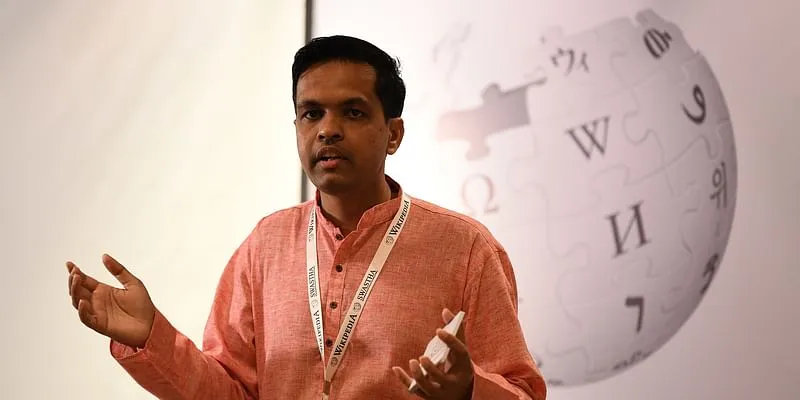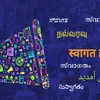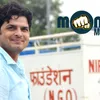How Wikipedia's Project SWASTHA is bringing back Indic language healthcare content amidst pandemic
An initiative by Abhishek Suryawanshi, Project SWASTHA is aimed at translating all medical content on Wikipedia into Indic languages to reach a wide-spread population.
Like any other kid of his age, growing up, Abhishek Suryawanshi from Boadkha, Maharashtra, only dreamt of eating ice creams and enjoying the rain. However, his asthma stood in the way of his happiness, making him spend most of his days at the hospitals.
“I think, I have eaten more medicines than chocolates, and have had more X-rays of me taken than photographs,” Abhishek tells SocialStory.
But, as he grew older, things started looking better for him, and he started going to school regularly. Though he never thought of himself indifferent from his classmates, being enrolled in a Marathi-medium school, Abhishek had trouble communicating in English and Hindi. However, he managed to overcome the hurdles and mastered both languages.
Just like Abhishek, there are several thousand Indians who have difficulties with the English language — a medium used for most of the digital content. In fact, a recent Google KPMG survey corroborated this by saying nine out of 10 people trust information conveyed in their local languages.
To address this knowledge gap, 29-year-old Abhishek started Project SWASTHA in November 2019. SWASTHA stands for Special Wikipedia Awareness Scheme for the Healthcare Affiliates, which translates medical content into regional languages.
In a conversation with SocialStory, Abhishek, Founder and Director, Project SWASTHA, explains how translating healthcare content to Indic languages has played a major role during the COVID-19 pandemic.
Social Story [SS]: How did you stumble upon the idea for Project SWASTHA?
Abhishek Suryawanshi [AS]: Most Indians do not have access to the most basic healthcare information, which can help them prepare for the situation before going to the hospital.
Also, additional factors like a lack of internet access and illiteracy can pose problems. Thus, we started Project SWASTHA to ensure healthcare information is made available from an Indian perspective.
For example, tuberculosis (TB) is primarily caused by smoking and HIV AIDS in the US and UK. However, in India, TB tags along with other neglected tropical diseases. So, there was a need to bring it to the Indian context and make it relevant for the Indian audiences.
The project makes healthcare information available in Bangla, Bhojpuri, Hindi, Kannada, Malayalam, Marathi, Punjabi, Urdu, Tamil, and Telugu.

Abhishek Suryawanshi (Image: Wikipedia)
SS: Why did you choose Wikipedia as the medium for this venture?
AS: Wikipedia sees over 750 million visits each month, just from Indian readers, making it the fifth-highest number of views from any country. Not only do Indians access Wikipedia in large numbers, but Indian Wikipedia editors are also integral and valued contributors to the online encyclopaedia, which is available in 23 Indian languages.
In 2012, I was invited by Wikimedia Foundation, the host organisation of Wikipedia to host one of their events, which paved my way into the company. While working there, my aim was quite simple — make English content accessible in Indic languages. And, Project SWASTHA was started to do that exactly.
SWASTHA is the first-ever dedicated platform in the world for Indian communities working in healthcare knowledge dissemination. It is also the first dedicated Wikipedia project, which creates an offline platform for Wikipedians to collaborate through workshops/events available for organisations/schools.
In fact, these events are free and open to all, and anyone can join the project and work with experienced healthcare professionals.
SS: How do you ensure that the content is genuine at SWASTHA?
AS: This is one of the most frequent questions that I get. There are very few people in India who write about healthcare. So, we brought these people under one umbrella to actively contribute to the project. We have a specific standard operating procedure (SOP) to ensure that the content is translated and communicated effectively.
First, all the information is shared by medical experts from reliable institutions like the University of Virginia, Harvard University, and John Hopkins University, who ensure the content is genuine. Following this, Indian healthcare experts do a second round of scanning of these articles and make it relevant for the Indian audience.
Third, the project volunteers scrutinise all the content to ensure it is encyclopaedia material. And finally, the articles are sent to the translator volunteer community, who translate the content and upload it to the website. For existing articles, we improve and update them with the latest information.
SS: How did you go about the platform when COVID-19 struck India?
AS: Wikipedia SWASTHA is just another project in the bigger scheme of things. But, we have a huge group of healthcare experts, as well as our teams, who monitor and update the information timely.
Moreover, these pages on Wikipedia are locked and can only be edited by volunteers. This is very crucial since vandalism is quite common on the platform. But, a sensitive issue like COVID-19, needs a lot more accurate and correct information that can prevent creating major scare amidst the audience.
SS: What is the kind of impact you have seen with regional languages?
AS: The reception is pretty good, and this comes from many doctors who read the articles. These doctors know their patients are also going to read them, and, in turn, they can prepare themselves for all the follow-up questions.
Wikipedia is seeing 300 times more traffic than any other Indian government website, and 10 times more traffic than health platforms like the World Health Organisation (WHO) and the Centre for Disease Control and Prevention (CDC).
In fact, the coronavirus related pages see a lot of traction daily. The COVID-19 pandemic in India pages sees a daily average of about 16,000 pageviews. Further, the mental health pages have also seen a lot of traction, especially in the sub-continent.
SS: Tell us more about your mental health campaign.
AS: When Sushant Singh Rajput met with an untimely death, there was a lot of curiosity about mental health and wellness. So, a few of the volunteers got together, and we put together a few insightful pages around the cause.
Moreover, mental health is still a taboo in India. In fact, the causes of depression and anxiety in Western communities are much different from what is experienced here. While someone in the US goes through depression — which maybe attributed to loneliness — in India, there is a huge range of societal issues that comes into consideration.
We ensure to localise the content that goes beyond just translation efforts.

Representational image
SS: What have you planned for SWASTHA in the days to come?
AS: Moving forward, we are trying to find a way to make the content accessible in the spoken format. We are also trying to enrich our pages with a lot more infographics, images, and videos, which will make the page less monotonous and more interactive.
We also want to work with non-profits and government agencies, and encourage them to share content without the copyright, so that we can help them reach the right kind of audience.
Edited by Suman Singh









